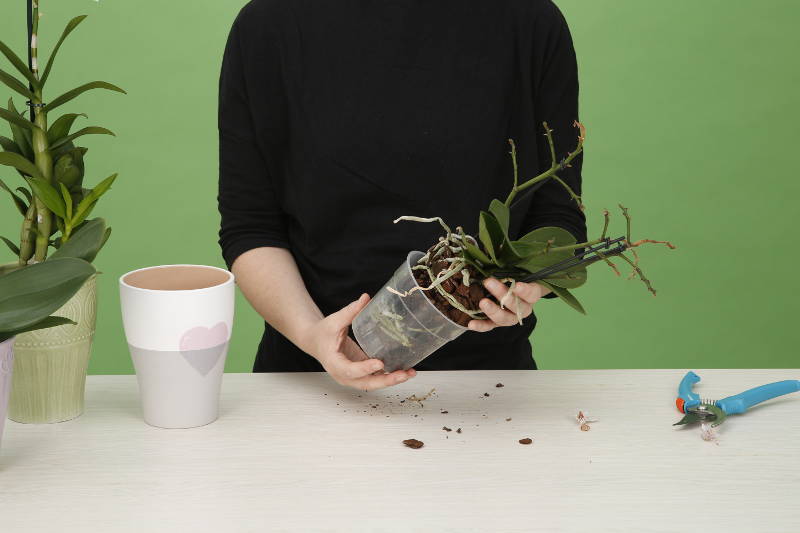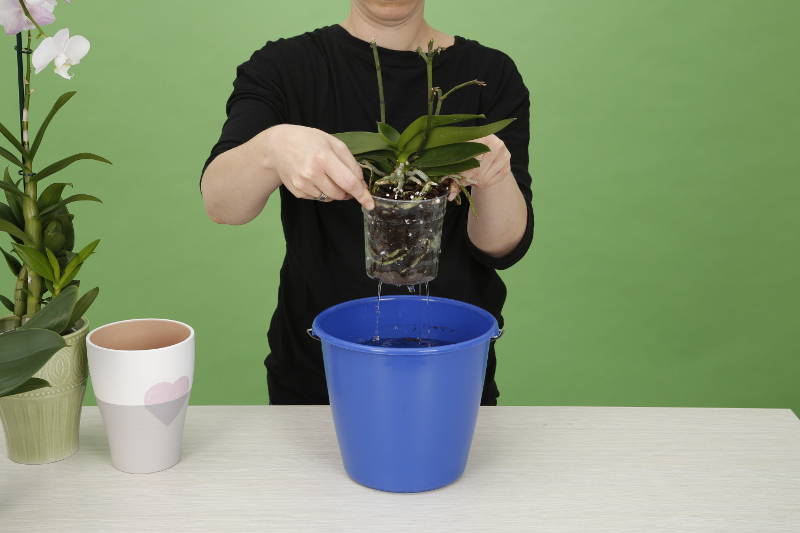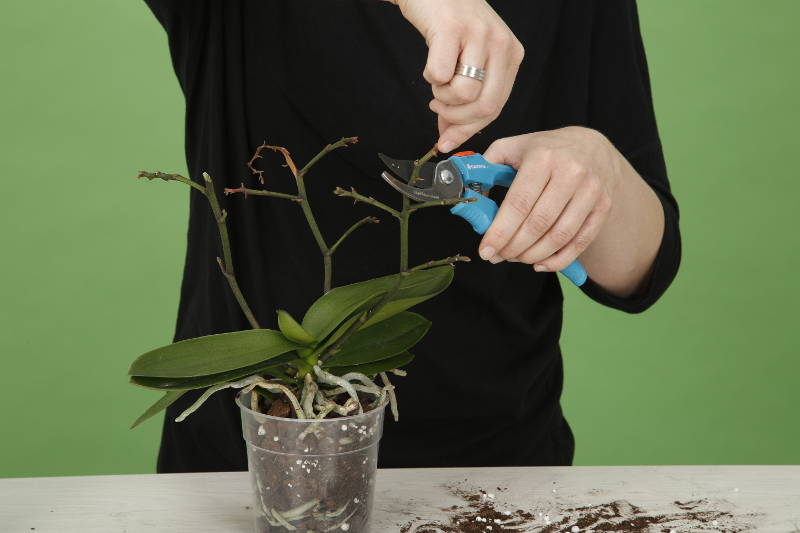Originally from the tropical rain forest, orchids are one of the absolute favorites in many western countries’ households. By far the best selling orchid is the butterfly orchid (Phaleanopsis). They are available in many different colors and shapes and they give us pleasure for a long time.
How does proper orchid care work?
We have collected for you the most important points in our orchid etiquette.
For all orchid newbies we have a few encouraging words at the beginning:
Orchids are contrary to the widespread opinion quite easy to care for – so do not worry but smile!
Environment / Climate
- Do not expose your orchids to direct sunlight
- do not expose them to heating air
- they need a lot of humidity
- a bright place at the window (west or east side)
- ideal place: bathroom window (warm + high humidity)
Repotting
- not during flowering
- water before repotting: soil dissolves more easily from the roots
- loosen the flower by slightly squeezing the plant container
- cut off old and sick roots
- repot every 2 to 3 years
- use orchid soil (substrate) only
- new container should be transparent so that roots receive sunlight
Watering – the core of good orchid care
- once a week in winter, twice a week in summer is completely sufficient and then only a small sip: a shot glass full of water is enough
- floating: put your orchid with its container in the sink/in a bucket with fresh, lukewarm water until the water runs into the container. Leave it there for a few minutes, so that the substrate soakes with water. Then let excess water drain for about 20 minutes before you put the plant back in the cover pot.
- use soft water: rainwater / tap water
- do not use distilled water
- regularly mist your plant with water – a sprayer is best for this purpose
- avoid overwatering: always make sure that excess water can drain to prevent root infections and rotting
- color of substrate indicates watering needs
Fertilizing
- do not fertilize in winter
- every 2 – 4 weeks in summer
- orchids are very sensitive here. Less is more
Trimming
- always use a sterile cutting instrument
- for healthy, green spikes: Find a node under the lowest flower bloom. Trim 1 inch above that node – the orchid may bloom from the same spike.
- for unhealthy, brown spikes: Cut all the way back to the base of the plant.
We hope that we could help you with our little orchid care guide.
Just comment if you have questions about this post and feel free to write us your very own orchid care recommendations.
Have fun gardening!
Your Scheurich-Blog team




